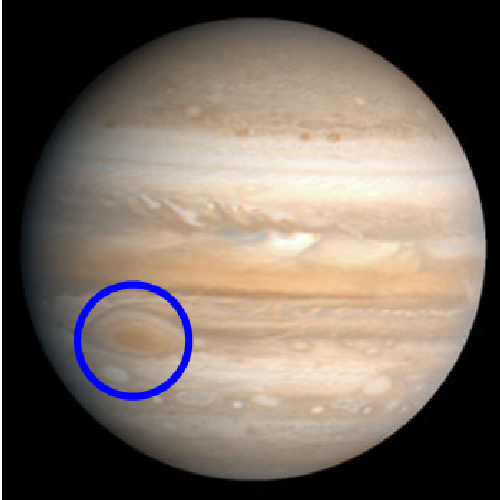The Inter-centennial Giant Super Storm
|
On 8 November 2013, Super Typhoon Haiyan swept across central Philippines and claimed more than 6,000 lives caused by storm surges[1], high winds and rainstorms. After forming over the western North Pacific on 3 November, Haiyan made its way to the South China Sea through the Philippines, making landfall over northern Vietnam on the morning of 11 November and later dissipated over Guangxi. Haiyan had a lifespan of around 9 days. Based on past records, Typhoon John, which lasted more than 30 days[2], might probably be the most long-lived tropical cyclone on record which traversed both the Northeast and the Northwest Pacific basins during August and September 1994. In fact, tropical cyclone on Earth is a warm-core system. It transports energy from the tropics to higher latitude regions so that the Earth can maintain a proper energy balance. In contrast with tropical cyclones on Earth, Jupiter's Great Red Spot (hereafter GRS) has been known as the most ancient living and the truly magnificent storm in our Solar System. Studies have suggested that the GRS might have been observed by the astronomer Giovanni Cassini in 1665. It is estimated that the age of the GRS is more than three centuries[3][4]. The GRS is located on the Jupiter's southern hemisphere and its shape, color, size and location has been changing. Currently, it is located near 22 ° S and its size is over 20,000 km in length and more than 10,000 km in width, about two to three times larger than the Earth (Figure 1) [3]. Interestingly, the GRS is an anti-cyclonic high pressure system with winds rotating in an anticlockwise direction, whereas tropical cyclones in the Southern Hemisphere of the Earth are cyclonic low pressure systems with winds swirling in a clockwise direction. Winds near the edge of the GRS can reach above 600 km/hr[4].

It is yet uncertain why the GRS can persist so long. Some researchers have speculated that the GRS survives by absorbing smaller vortices around it to generate energy. In recent years, scientists put forward a new theory and proposed that the vertical movement of hot gases inside the GRS produces heat to sustain its life[5]. For geophysical fluid dynamicists, the GRS has served as a good reference, helping them to study why some eddies in the oceans can last for years without dissipation[5]. All in all, the science and beauty of Jupiter's GRS has fascinated many scientists and astronomy enthusiasts for centuries.
References:
|
||
